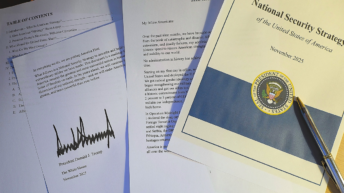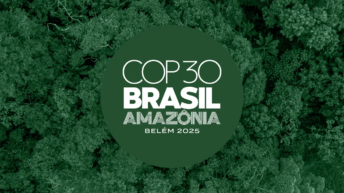
On Sunday night, the United States carried out the unexpected strikes, the bombing of Iranian nuclear sites of Fordow, Natanz and Isfahan using B2 bunker buster bombers, under the code name “Operation Midnight Hammer”. This attack (illegal under international law) was in sharp contrast to Trump’s election rhetoric about being a ‘peace president’, committed to stopping and not engaging in forever wars. At the same time, Trump’s recent diplomatic breakthrough in Africa, where he brokered some kind of peace treaty between the Democratic Republic of Congo and Rwanda and his repeated but doubtful claim that he “stopped the war” between India and Pakistan have reignited the debate about the contradiction between his pre-election isolationist foreign policy posture and his actions as President. However, while much of the media focused on the optics, the broader pattern suggests a consistent tilt toward strategic engagement, not a retreat from the helm of global affairs.
Isolationism to Involvement
A similar pattern can be seen in President Trump’s visit to the Gulf this May, which revealed his deepening interest in conflict-prone regions. Although the visit reaffirmed the transactional character of Washington’s diplomacy, it also highlighted more inter-personal dynamics, like the gesture of Qatar gifting a plane to the U.S. President, widely seen as an attempt to curry his favour.
The reaffirmation of America’s presence overseas is further evidenced by Trump’s broader foreign policy activities. These include a renewed focus on the Russia-Ukraine conflict, diplomatic gestures such as attempts at mediation between two belligerent South Asian neighbours, nuclear talks with Iran, an agreement with Houthis, and a controversial ‘cordial’ meeting with acting Syrian President Ahmed al-Sharaa, who is listed under the UNSC 1267 Sanctions List as an international terrorist on whose head the US Justice department had put a (recently lifted) 10 million Dollar bounty.
Discursive Transformation: From Vilification to Validation
Trump’s foreign engagement reflects the shift in his rhetoric. Previously, in 2018, Trump commented that Islamabad and Rawalpindi had misused $33 billion in aid money given by Washington and paid the US back only with deceit and lies, while also providing a safe haven to terrorists. Yet recently, he said, “I love Pakistan”. Similarly, earlier, he portrayed the Arab world as a source of extremism and violence. However, during his Gulf visit in May, he praised Arab culture, describing Gulf leaders as “incredible, tall, handsome, and charming.” Moreover, he also began defining the Arab world through commerce rather than chaos, using a strategically tailored vocabulary aimed at influencing perceptions at home and abroad.
From Geopolitics to Geoeconomics
Trump seeks to replace geopolitics with geoeconomics. Unlike previous administrations that emphasised the complex political dynamics of the West Asian region, Trump focused instead on securing multi-billion-dollar support from Arab monarchies for the US economy. Whether it is a purported $600 billion investment commitment from Saudi Arabia or $1.2 trillion pledged by Qatar over a decade, all point to the fact that raising funds is the name of the game in Trump’s White House. This emphasis is in tune with his broader domestic agenda, particularly the “Make America Great Again” (MAGA) doctrine, which prioritises employment generation and economic growth through industrial revival at home and foreign exports promotion.
A Calibrated Approach to Israel and the Middle East
Trump’s changing stance is also evident in his recalibrated approach to Israel and its regional adversaries. During his 2017 visit, Trump promised unconditional support to Israel, endorsing its claims in the West Bank and lavishing symbolic gifts. In stark contrast, during the most recent visit to West Asia, Israel was notably absent from the conversation. He avoided evoking the war between Israel and Hamas in Gaza. Instead, his administration struck agreements with actors traditionally opposed to Israel, such as the Houthis and Iran, and even met with the new Islamist Syrian leadership. These actions may mark a significant policy change, indicating a broader and perhaps more pragmatic U.S. approach to the region. Another instance of involvement can be seen in Africa, where Trump’s administration has launched a new commercial strategy through its African bureau.
Latin America is another theatre for the shift from rhetorical isolationism to strategic involvement. Secretary of State Marco Rubio’s high-profile visit to Panama asserted the growing U.S. interest in curbing Chinese influence in the Canal Zone and reasserting hemispheric leadership, in keeping with the Monroe Doctrine. Trump wishes to unify all of North America into a single ‘superstate’, including Greenland. While his early discourse favoured disengagement, his administration intensified sanctions on Venezuela, recognised the opposition in that country, and expanded anti-narcotics operations across the region. This reflects a strategy in which economic leverage(geoeconomics) and political symbolism are intended to take the place of armed interventions with ‘boots on the ground’(geopolitics). Trump’s Latin American approach illustrates a selective reassertion of U.S. influence, grounded in economic and ideological priorities.
A Pragmatic Rebranding of “America First”
Despite his fiery campaign slogans and promises to pull back from the outside world, President Trump’s time in office tells a different story. From the Gulf to Latin America, Trump has not so much retreated from global affairs as rebranded American involvement on his own terms. Whether forging billion-dollar deals in the Middle East or stepping up pressure on Venezuela, Trump’s actions often contradict his rhetoric as they did in his first term. This indicates continuity rather than change between Trump 1.0 and 2.0. and suggests that he tells his supporters what they want to hear without necessarily meaning to keep his word.
Contrary to old-school internationalism, the current US policy is one of selective, strategic engagement, based on the perceived interests of America and transactional gains (also involving the first family’s business interests). Trump’s diplomacy is unconventional, unpredictable, rhetorically aggressive, and rarely soft. What emerges is a “Trumplomacy” that avoids permanent commitments and entrenchments while still asserting U.S. power where it matters most.
Understanding shifts like these is important. It shows that foreign policy isn’t mainly about ideology; it’s also about negotiation, performance, and power assertion. Trump’s world isn’t smaller. It is being redefined in keeping with the American agenda for retaining global supremacy. To write it off as isolationist is to miss the nuance of a presidency that, paradoxically, seeks to dominate the global stage by appearing to walk away from it.
In sum, these moves underscore the need to adopt a nuanced approach to “Trumplomacy”, Trump’s often confusing diplomacy.






Add comment